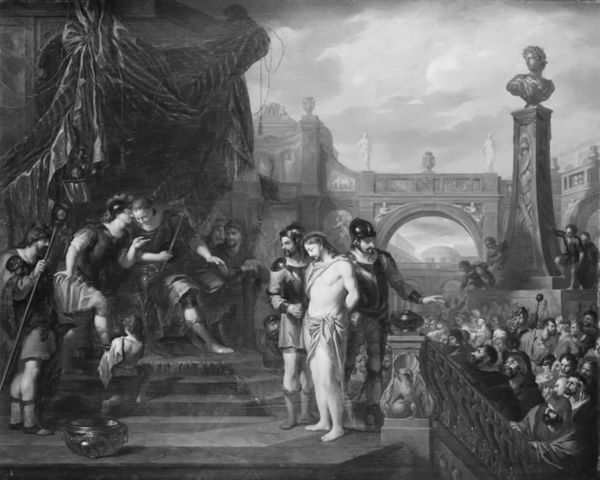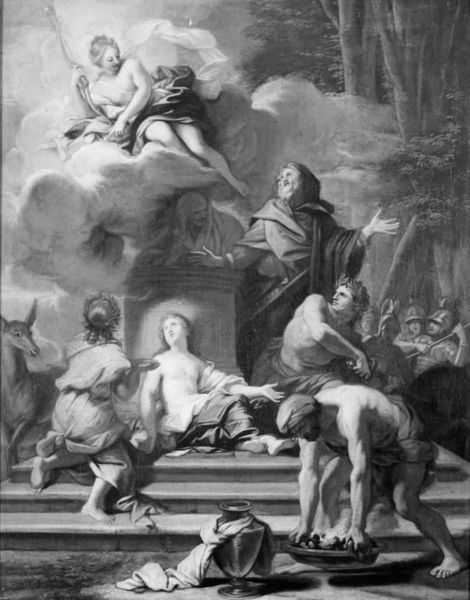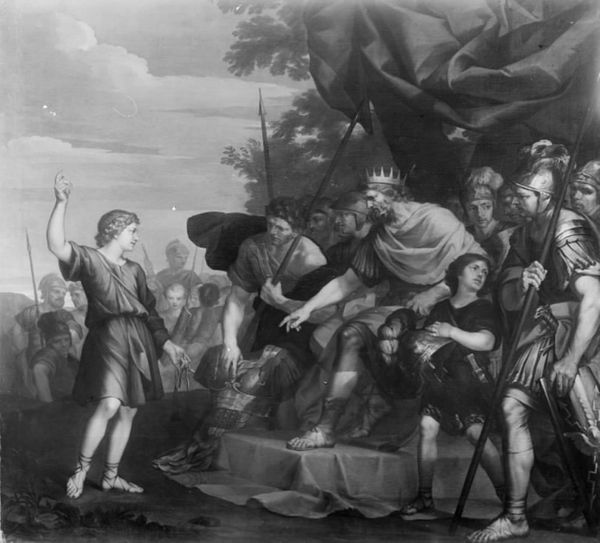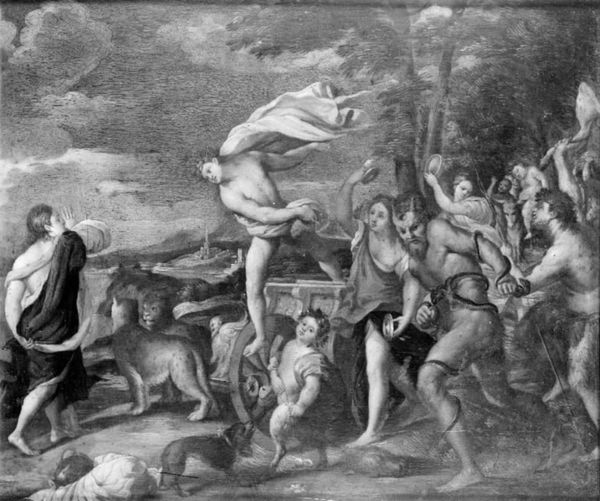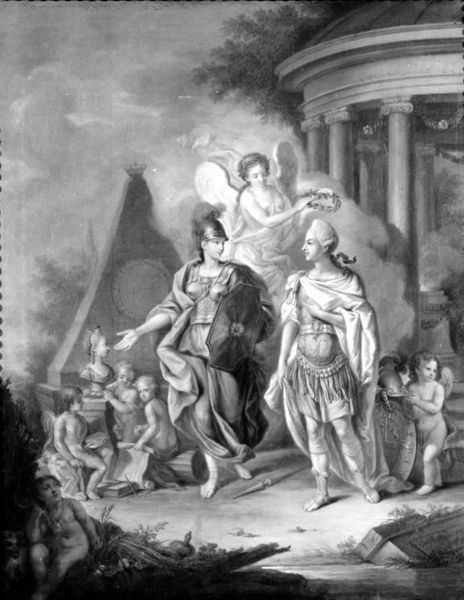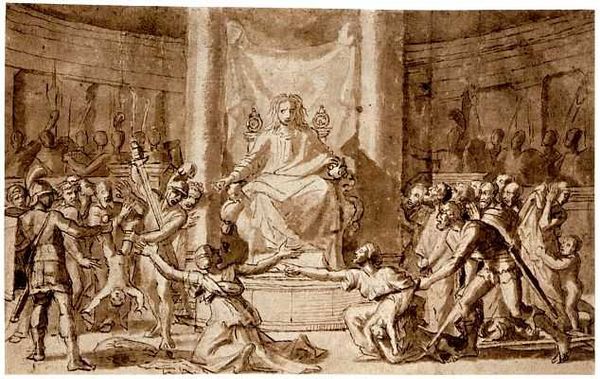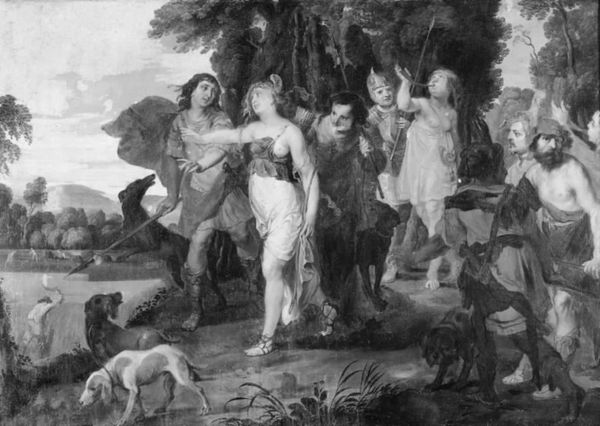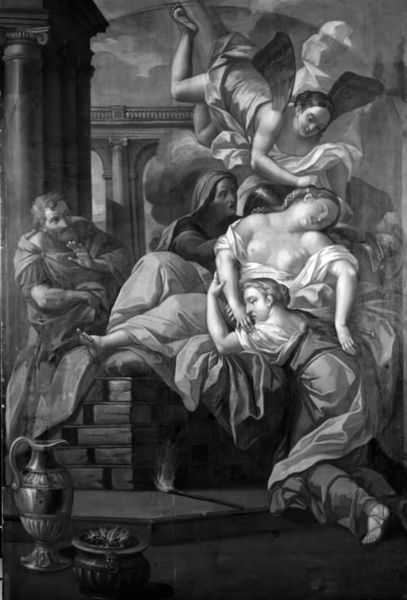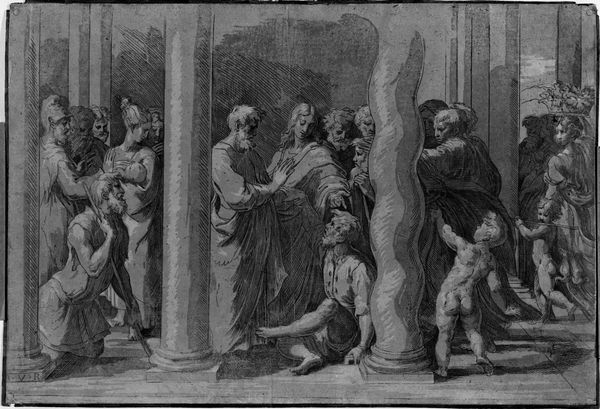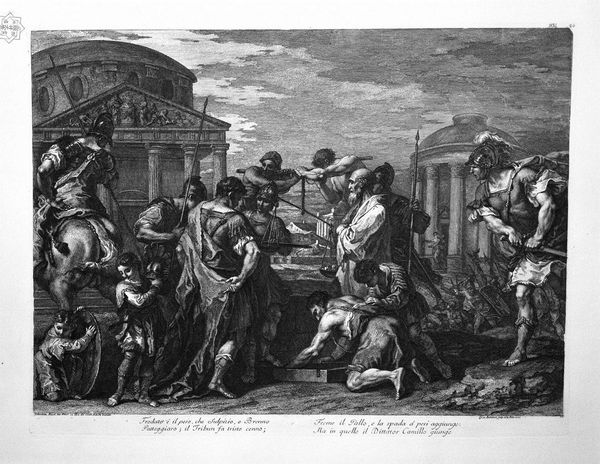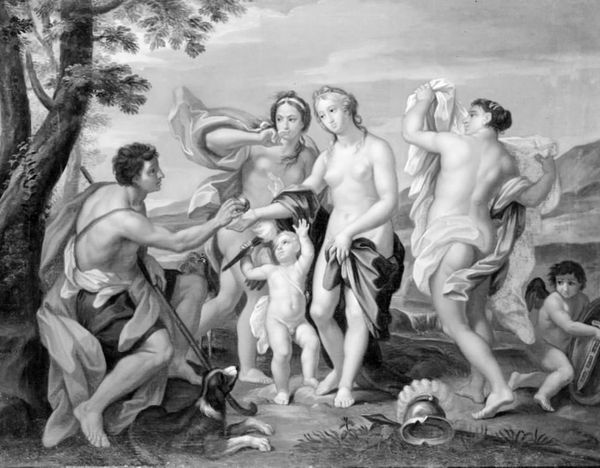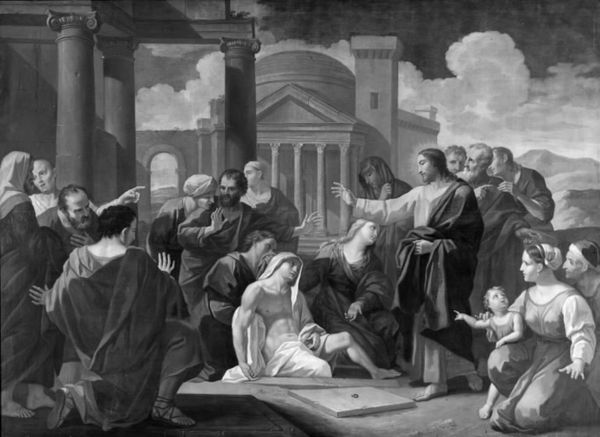
painting, oil-paint
#
baroque
#
painting
#
oil-paint
#
landscape
#
figuration
#
history-painting
#
monochrome
#
realism
Dimensions: 170 cm (height) x 234 cm (width) (Netto)
Editor: This oil painting, "Coriolan ved Roms belejring," which translates to "Coriolanus at the Siege of Rome", created in 1714 by Hendrik Krock, strikes me as remarkably balanced despite its chaotic subject. The artist’s choice to render the entire composition in near monochrome brings out the geometry of the arrangement in a fascinating way. What stands out to you, viewed through the lens of formalism? Curator: Precisely! The restricted palette encourages us to consider the disposition of forms above all else. Note how Krock manipulates light and shadow to define distinct zones within the canvas. How does the artist construct visual tension here? Editor: I observe a contrast between the rigidity of Coriolanus and his soldiers on the left versus the more fluid, almost pleading gestures of the women on the right. The composition drives the eye towards the center, to a mother with child. Is that intended as the climax of the artwork? Curator: Indeed, that grouping serves as a fulcrum. The implied lines emanating from their gestures, together with the dramatic cloudscape above, resolve formally in Coriolanus’ figure. This is where power lies; it's a moment of decision visually manifested through compositional relationships. The texture achieved with oil paints really enriches these contrasts, as well, do you see that? Editor: I do now! So, the restricted use of color doesn't limit the piece but rather accentuates the interplay of forms and light. This approach actually emphasizes the depth of emotions conveyed in this fraught moment of history, a technique that has created so much emotion here. Curator: Exactly. Focusing on form reveals Krock's strategic use of visual components to articulate narrative tension. Color here is subdued, so forms may come forward to articulate meaning. Editor: I’m struck by how analyzing purely formal qualities opens a deeper understanding, and how light here informs our viewing in critical ways. Thank you for your guidance. Curator: My pleasure. Formalism can bring us closer to understanding art in unique ways, and that is where a renewed relationship can really come into being for an educated art appreciator.
Comments
No comments
Be the first to comment and join the conversation on the ultimate creative platform.
